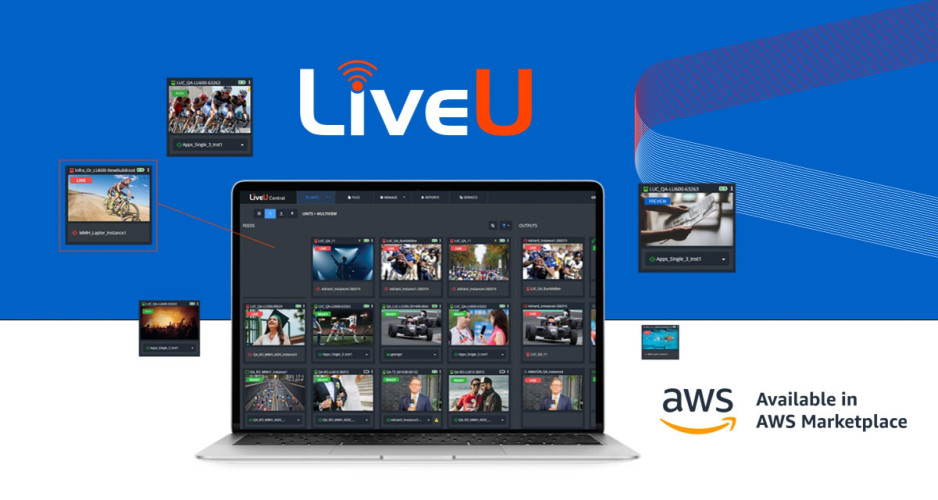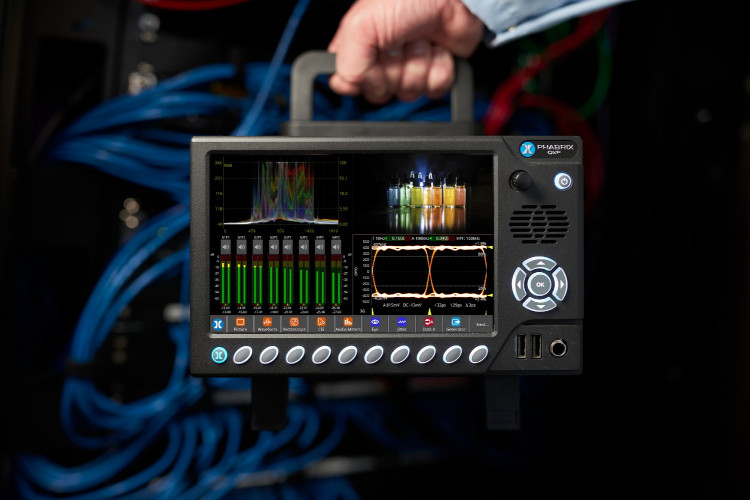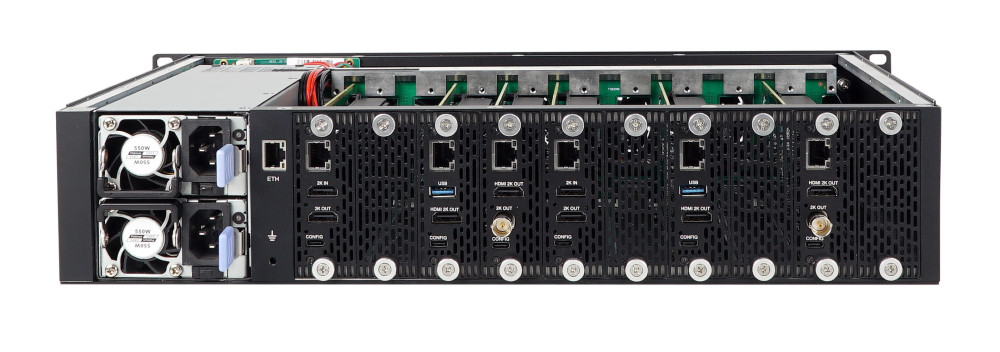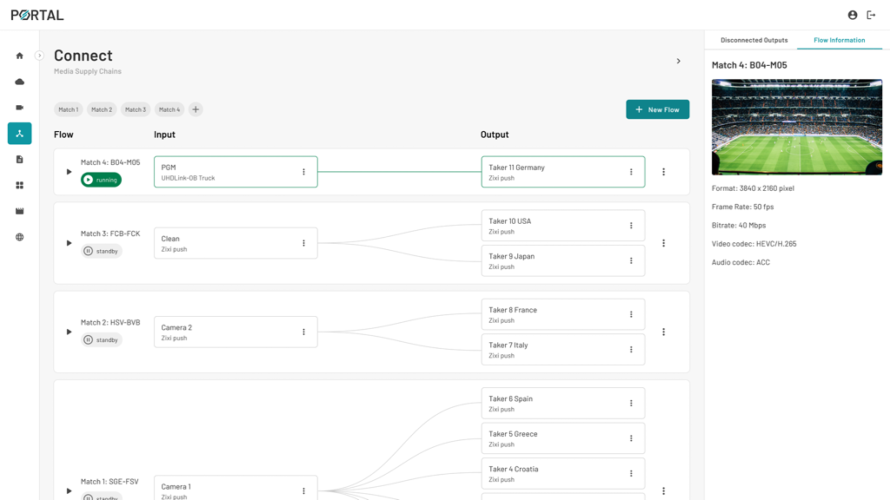Question and Answer with Trilogy

Author: Kieron Seth#
Published 1st August 2011
Question 1: What bandwidth would I need to allow on my network to reliably support IP communications and what other issues would I need to take into consideration?
The bandwidth required to support IP based intercom or talkback communications really depends on the quality of audio you want to achieve. Therefore the higher the quality, the greater the bandwidth required.
Historically this would have been a much more significant concern although as IP has become prevalent for file sharing and video transfer the insignificant requirement for intercom audio means that this is no longer an issue.
The most critical consideration for network design is continuity of service. This is a simple concept with serious effects if not considered in the network design. If the system is designed to use a Codec such as G.722 it will require a bandwidth of at least 100 kb/s continuously, should it drop below this the service will start to hit problems. If the available bandwidth is 100 kb/s for 90% of the time and 50 kb/s for 10% of the time then good design practice would suggest a G.729 Codec offering a good compromise between quality and bandwidth consumed and would guarantee better continuity of service.
Other considerations should include the use of a dedicated infrastructure when using a WAN and the use of routers that support industry standard QoS which is found on modern intercom systems such as Trilogy’s Gemini.
Question 2: Could I extend my communications over Internet or satellite? What can I do and what are the constraints?
Yes, it is possible to extend your intercom operations over both Internet and satellite providing a full range of services over a much greater distance. This includes teams on location, in regional studios or in broadcast centres at global events.
When extending over either the internet or satellite using a WAN it’s always advisable to set up a Virtual Private Network (VPN) which helps the service quality, improved security through encryption and also greatly simplifies set up and operation for everyone involved.
Broadcasters have traditionally used satellites when reporting from war zones or from remote locations and over the years they have become adept at living with the inherent delays found with this practice. Whatever we do with technology it still takes time to physically transfer audio from its origin to the desired destination, roughly a quarter of a second. However, using “Fast Keys” as can be found in Trilogy’s Gemini system we keep the delay at this manageable level. Fast keys establish a route and then keep that route open so that audio will arrive at location just as fast as the laws of physics allow.
The use of satellite and the internet is particularly advantageous for news bureaux as they are able to treat journalist as if they were present in the studio equipping them with facilities such as IFB which would not have previously been available out on location. A move that simplifies production leading to a higher quality broadcast and improved efficiency.
The benefits of having a reporter on location have led news organisations to adapt their production processes to allow for the inherent latency found in the use of satellite so that it does not look awkward on screen. Clever use of camera shots or the timing of the switch between news anchor and reporter has all helped.
Question 3: Will I have to replace my intercom in order to take advantage of IP technology or can I re-use what I have to keep costs to a minimum?
No, not necessarily. With most modern intercom system there are many ways to take advantage of the developments in IP technology. For example a customer with a Trilogy Commander system can, through the addition of an interface unit, extend this out over IP to IP enabled panels, VoIP phones or PCs running soft panel applications.
For people buying a new Intercom system with integral IP capability they will, in many cases, be able to retain and reuse their intercom panels. Trilogy’s control panels, for example, are designed to work with conventional and IP based intercom systems so can be deployed flexibly according to needs of the application.
Alternatively, existing intercom systems may be left in place and with the addition of an interface unit be made to connect directly to another existing or new intercom system allowing both for expansion locally and remotely.
Question 4: In the current difficult economic conditions will IP save me money?
The simple answer is yes and in many ways. One of the best examples of the cost savings associated with modern IP based intercom systems is the dramatic reduction in ISDN and standard telephony system expenses. Traditionally, remote studios, news bureaux and the like would incur the high fixed costs associated with the provision of ISDN lines or the variable costs of using analogue telephony or when on location, the even higher variable costs of mobile telephony networks. In the age of IP technology, the need for these has been eliminated; the IP infrastructure exists in nearly every scenario and communications require the use of an extremely small proportion of the IP bandwidth and so will not impinge on other activities but will dramatically reduce costs.
In addition to reusing current inventories of equipment as outlined above, modern distributed matrix systems can reduce installation costs through the use of a facility’s existing IP infrastructure. This removes the need to connect every panel back to a central matrix through what are sometimes extremely congested cable routes. This has an immediate impact on the cost of cabling as well as a much higher potential cost saving in the manpower required to either install the system in the first instance or reconfigure panel locations as time goes on.
Question 5: We are looking to install a new VoIP phone system in our facility. I don’t suppose it will interface to our studio talkback, will it?
Yes it will. Modern VoIP systems utilise Session Initiation Protocol (SIP) and this standardisation allows direct communication between IP phones and a modern IP enabled intercom system. This technology provides a wealth of opportunity for the inclusion of participants wherever they may be.
When designing a studio talkback system there is always a compromise between the available budget and all of the people who you would like to give intercom access to. This has meant in the past that some users that would have ideally been included were left out. Using an internal VoIP phone system solves this issue, you can include casual uses at no additional cost. Functionally speaking, the VoIP phone acts as if it were a small desktop intercom panel, giving the user access to the entire intercom system whilst still allowing it to function as their office phone.
One of the great advantages in this for broadcasters is that they can set the system up to allow office phones in a number of different facilities to integrate fully with the system. An example of this might see a regional and central studio working in conjunction to produce a news broadcast. Rather than having to have a number of dedicated intercom panels at a small regional studio supplying local news the journalist could use his standard office VoIP phone to link back to the main intercom.
Question 6: I’d like to be able to access my facility’s communication system from wherever I happen to be. Is this possible?
The simple answer to this question is yes and for nearly every situation has been yes to some degree for many years by using Satellite and Mobile phones. The key development seen over the past few years is the use of SIP which has allowed these communications to be used much more readily as the associated costs have fallen and the availability of the technology has increased.
Now, a user equipped with a laptop, a soft panel application and an IP connection can call into and be called from a talkback system, enjoying the same feature set as a user connected locally.
The same is true of SIP radios, smartphones with SIP clients and tablets. However a SIP phone will have a slightly reduced range of functionality as they do not have access to a full intercom panel and this can be seen as a half way house between a standard telephony connection and a traditional intercom panel.
The next step is to merge the functionally of the soft panel running on a laptop with the portability of a mobile phone…



































